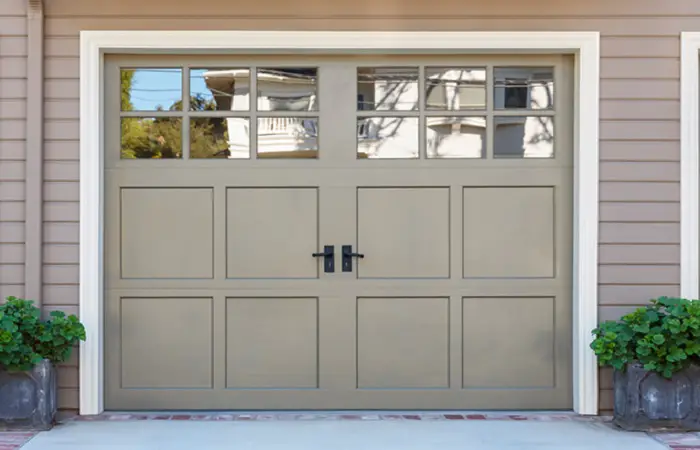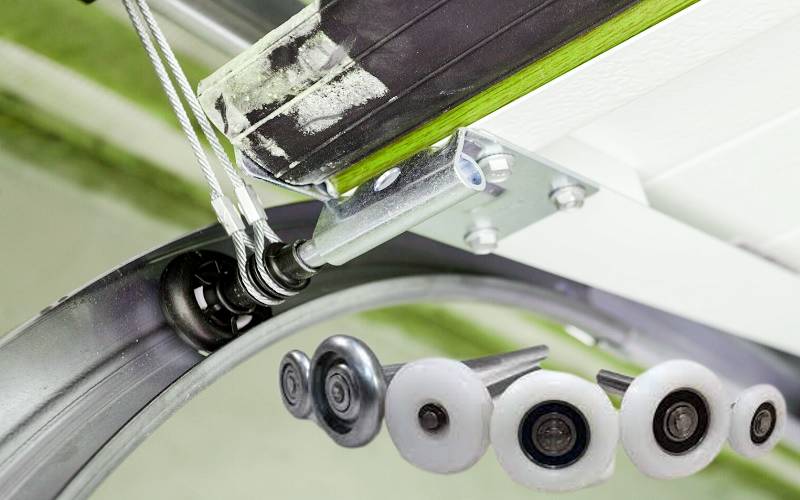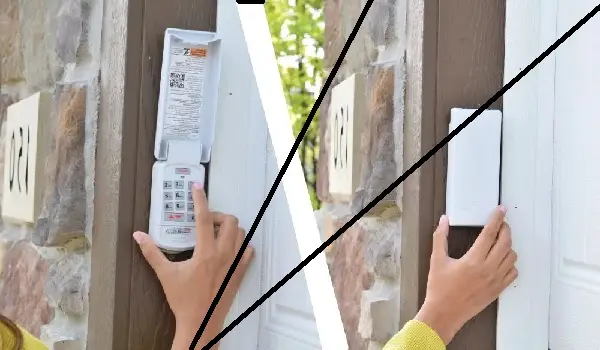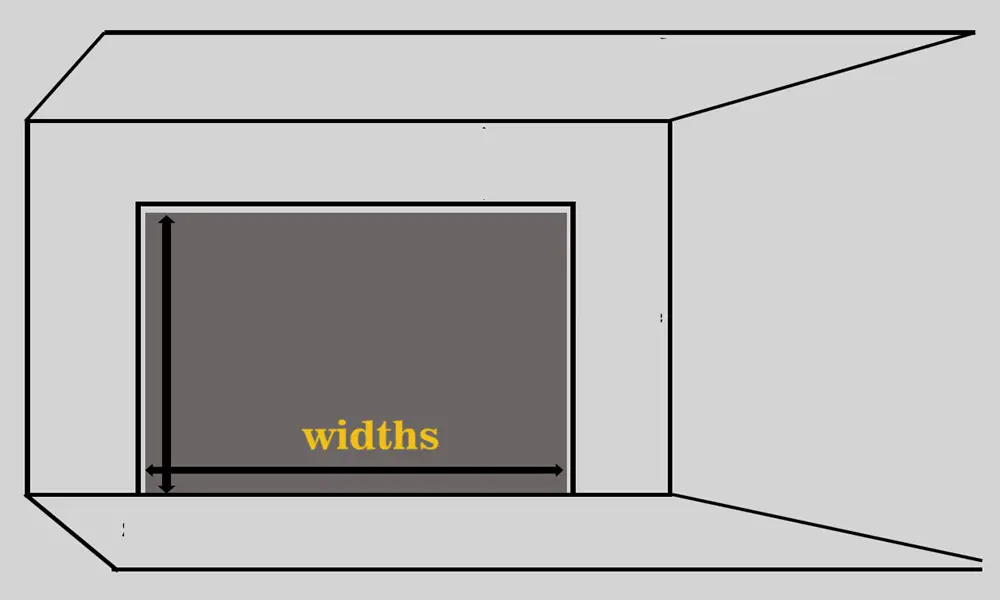Quick Fix Method
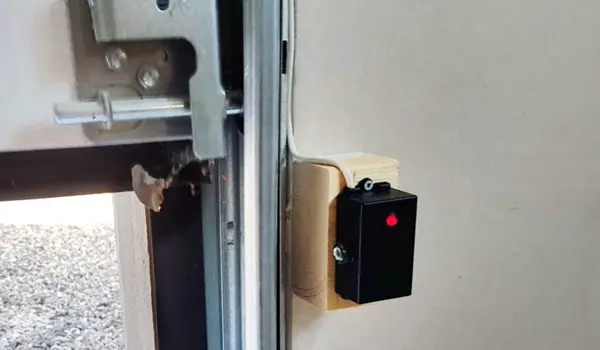
Check the Garage Door Area
Before delving into the intricacies of troubleshooting, it’s crucial to ensure that your garage door area is not only obstruction-free but also entirely safe for closure. Imagine this step as a preliminary check to make sure there are no unforeseen hurdles that might hinder the smooth operation of your garage door.
Take a moment to walk around the door’s path. Look for any objects, tools, or even debris that might be in the way. Ensure that the door has enough clearance to close without encountering any resistance. This simple yet effective measure ensures that the door can move freely, reducing the chances of any unexpected disruptions.
Wall Controller Method
Now, let’s talk about a quick and efficient solution if your trusty remote decides to act up. When faced with the persistent flashing lights and a door that refuses to close, turn your attention to the wall controller. This method serves as a reliable alternative to the remote, bringing a sense of control back to your hands.
- Press and Hold: Head to the wall controller and press the designated button. Sometimes, it might take two presses to initiate the process. During the first press, observe as the garage door light flashes ten times, indicating the start of the closing sequence.
- Continuous Hold: On the second press, hold down the button continuously until the garage door is fully closed. This action ensures that the door completes its descent smoothly, resolving the flashing light issue effectively.
For a more visual guide on this process, you can watch a demonstration here.
Troubleshooting
Safety Precautions
Before embarking on any troubleshooting journey, it’s paramount to prioritize safety. Your garage door is a hefty piece of machinery, and mishandling it can lead to accidents or damage. Follow these safety precautions to ensure a secure troubleshooting process:
- Secure the Area: Confirm that the surrounding area is free from any potential hazards or obstacles. This includes ensuring there are no children or pets in the vicinity during the troubleshooting process.
- Disconnect Power: Before inspecting or making any adjustments, disconnect the power to the garage door opener. This precautionary step minimizes the risk of electrical mishaps during troubleshooting.
- Use Proper Tools: If tools are required for any adjustments, make sure you use the right ones for the job. Using improper tools can lead to damage or malfunction.
By adhering to these safety measures, you’re creating a secure environment for troubleshooting, reducing the likelihood of accidents or complications. Now, let’s dive into the three essential parts of troubleshooting your garage door sensor.
In the subsequent sections, we’ll explore sensor alignment, wiring inspection, and sensor replacement to address the persistent issue of flashing lights and ensure your garage door operates seamlessly.
Three Parts of Safety Sensor Troubleshooting
When faced with persistent issues like flashing lights and a garage door that refuses to cooperate, diving into the intricacies of safety sensor troubleshooting becomes essential. Let’s break down this troubleshooting process into three crucial parts to ensure a comprehensive solution.
Part 1: Sensor Alignment

Understand the Sensor Issue
To begin troubleshooting, it’s vital to grasp the nature of the problem. In this case, the focus is on the alignment of the safety sensors. These sensors, often located near the base of your garage door, play a crucial role in ensuring the door operates smoothly without posing a risk. Misalignment can disrupt this function, leading to issues like the door not closing or reopening unexpectedly.
Importance of Alignment for Smooth Functioning
Proper alignment is the key to the seamless operation of your garage door. When the sensors are precisely aligned, they communicate effectively, allowing the door to close without interruptions. Misalignment can trigger the safety mechanism, preventing the door from closing or causing it to reverse unexpectedly, creating the need for a thorough alignment check.
Detailed Steps for Proper Sensor Alignment
- Visual Inspection: Begin by visually inspecting the sensors. Ensure there is no dirt, debris, or any objects obstructing the sensor lenses.
- Adjustment Screws: Most sensors come with adjustment screws. Gently adjust these screws to align the sensors properly. Ensure they are facing each other and level.
- Check Indicator Lights: Modern sensors often have indicator lights. Confirm that both sensors have a solid or blinking light, indicating proper alignment.
Part 2: Wiring Inspection
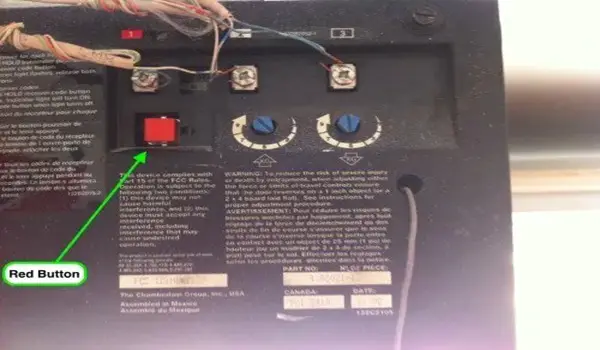
Why Wiring Matters in Garage Door Operation
The wiring connecting the safety sensors is a critical component of your garage door system. Faulty wiring can disrupt communication between the sensors, leading to malfunctions in the door’s operation. Understanding the importance of wiring sets the foundation for identifying and resolving potential issues.
Identify Faulty Wiring and Understand Its Impact
- Visual Inspection: Examine the wiring for any visible damage, fraying, or loose connections. Addressing these issues is crucial for restoring proper functionality.
- Use a Multimeter: If the visual inspection doesn’t reveal any issues, use a multimeter to test the continuity of the wiring. This helps identify hidden faults that may not be apparent.
Step-by-Step Guide to Repairing or Replacing Wiring
- Disconnect Power: Before working on any wiring, disconnect the power to the garage door opener to ensure safety.
- Repair: If the wiring shows signs of damage, carefully repair or replace the affected sections. Ensure the replacement wiring matches the specifications of the original.
Part 3: Sensor Replacement

When to Consider Sensor Replacement
There are instances where sensor replacement becomes necessary. If alignment and wiring inspections don’t resolve the issue, or if the sensors are visibly damaged, opting for replacement is a sensible solution. Signs of irreversible sensor damage include cracks, water damage, or electronic failure.
Choosing the Right Replacement Sensor
- Check Compatibility: Ensure the replacement sensor is compatible with your garage door opener model. Refer to the manufacturer’s specifications for guidance.
- Quality Matters: Invest in high-quality sensors to ensure durability and long-term functionality.
Installation Process for Seamless Functionality
- Disconnect Power: As with any garage door-related work, start by disconnecting the power to the opener.
- Remove Old Sensors: Uninstall the old sensors carefully, noting their positions and connections.
- Install New Sensors: Follow the manufacturer’s instructions for installing the new sensors. Pay attention to alignment and wiring connections.
- Test Functionality: After installation, conduct a test to ensure the sensors are working correctly. This may involve a trial closing of the garage door to confirm smooth operation.
By addressing each of these three parts sensor alignment, wiring inspection, and sensor replacement – you’re taking a comprehensive approach to troubleshooting your garage door’s safety sensor issues.
Following these steps diligently will contribute to a seamless and reliable garage door operation, eliminating those frustrating flashing lights and ensuring your door closes as expected.
Conclusion
In the fast-paced hustle of daily life, unexpected garage door issues can indeed be a hassle. Armed with the right knowledge, you can not only troubleshoot these problems but also effectively fix them, restoring the seamless functioning of your garage door.
Your garage door is more than just an entrance or exit it plays a crucial role in your daily routine, contributing to the smooth flow of your activities. Keeping it in top shape is essential for a stress-free and convenient lifestyle.
So, the next time you find yourself facing those ten flashes of frustration, instead of feeling overwhelmed, you’ll be well-prepared to tackle the situation head-on.
Whether it’s a quick fix using the wall controller method or a more in-depth troubleshooting process involving sensor alignment, wiring inspection, or even sensor replacement, you now have the knowledge to navigate through these challenges.
Remember, a well-functioning garage door adds a layer of convenience and security to your life. It’s not just about a piece of machinery; it’s about ensuring that your daily routine remains uninterrupted by technical glitches.
By investing a bit of time in understanding and maintaining your garage door, you contribute to the overall efficiency of your home.
So, the next time you hit that remote button and encounter unexpected issues, don’t panic. Instead, refer back to the insights shared in this guide. Whether you’re quickly checking the garage door area for obstructions, utilizing the wall controller method, or delving into the three essential parts of sensor troubleshooting, you now have a toolkit of solutions at your disposal.
In conclusion, maintaining your garage door isn’t just about fixing problems when they arise; it’s about proactively ensuring its optimal functionality.
With this knowledge in hand, you’re well-equipped to face any garage door challenge and ensure that those ten flashes of frustration become a thing of the past. Happy troubleshooting, and may your garage door always operate seamlessly!




